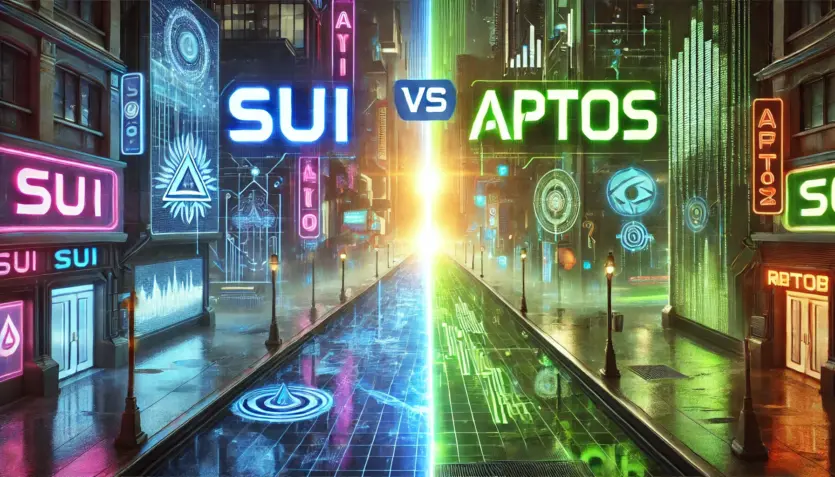
Investment company VanEck has published a detailed analysis of two blockchain platforms — Sui and Aptos. Both networks were created by former developers of of the Diem project by Facebook, which aimed to create a stablecoin for the social network.
Analysts predicted that by the end of 2025, the price of the SUI token could reach $16 (up 326% from today’s price of $3.75), and the APT token — $22 (up 201% from the current price of $7.30). These forecasts are based on current development trends, technological advantages, and the potential for mass adoption of both platforms. In addition, VanEck made a detailed analysis of the advantages of both blockchains.
Diem’s key achievement was the creation of Move, a smart contract programming language based on Rust. Move was developed to solve the problems inherent in previous smart contract languages, such as Ethereum’s Solidity and Cardano’s Haskell. Both the Sui and Aptos platforms use Move to provide a faster, more secure, and more intuitive development environment.
Move-based blockchains currently hold a combined market share of approximately 2.7% of the SCP market, split between Aptos (0.7%) and Sui (2%). VanEck believes that this share will grow to 6.5%.
Analysts also noted that Sui is currently better for traders than Aptos. In addition, Sui’s design is superior to Solana in practical application. Although Solana theoretically allows similar functionality, its strict limitations on the number of input accounts (64) and the maximum number of instructions for transactions significantly limit its use. For example, a complex transaction in the Sui network that interacts with more than 100 objects would be impossible in Solana.
Both Sui and Aptos set transaction prices based on the complexity of the transaction, which is measured in terms of network resources (gas) used. Gas — is the cost, expressed in native tokens, that each network charges for a certain unit of resource use.
Aptos has a global price for gas that does not charge a higher fee for the more in-demand parts of the Aptos blockchain (e.g., DEX with a large number of trades). In comparison, Sui allows more needed parts of the network to charge more than less prioritized parts of the network. These seemingly minor differences are important because they have a significant impact on the economics of traders. Especially important traders, called «market makers», often place and cancel (update) thousands (or more) of orders per second. This is done in order to offer/give favorable prices based on fresh information.
Thanks to PTBs (parallel transaction blocks) that change many parts of the state simultaneously, a market maker can update its order book (list of buy/sell orders) with fewer transactions. This in itself makes transactions on the Sui network cheaper than on other blockchains such as Aptos.
In addition, in November 2024, the Sui network earned 24% more than Aptos for the entire last year.
Finally, Sui has an interesting architectural component built into its blockchain called DeepBook. It is a global centralized limit order book (CLOB) on the Sui network designed to provide wholesale liquidity.
This liquidity layer allows decentralized exchanges (DEXs) and their aggregators (services that connect to multiple DEXs) to access global liquidity within Sui.
DeepBook pools the liquidity of the entire Sui network into a single pool, providing deeper liquidity for traders. Since any application can tap into this liquidity layer, it reduces the advantages of platforms with large amounts of liquidity, leveling the playing field and lowering the fees that DEXs can charge users.
One of the key differences between SUI and APT tokens is that SUI has a limited number of tokens, while APT has no maximum issuance limit. Aptos inflation is currently at 6.7% per year and decreases by 1.5% annually. However, this infinite amount of APT due to constant inflation is partially offset by the fact that transaction fees on the Aptos network result in token burn.
Sui, on the other hand, does not burn fees for its transactions. This means that activity on the Sui network is more beneficial to those who staking tokens than to those who do not. Those who staking validators on the Sui network receive transaction fees. In the case of Aptos, token burning makes it so that the increase in transaction fees benefits everyone equally.
However, it is worth noting that Aptos can achieve a deflationary token model at the expense of high activity, while Sui has this built into its storage system.
Source: VanEck


Spelling error report
The following text will be sent to our editors: